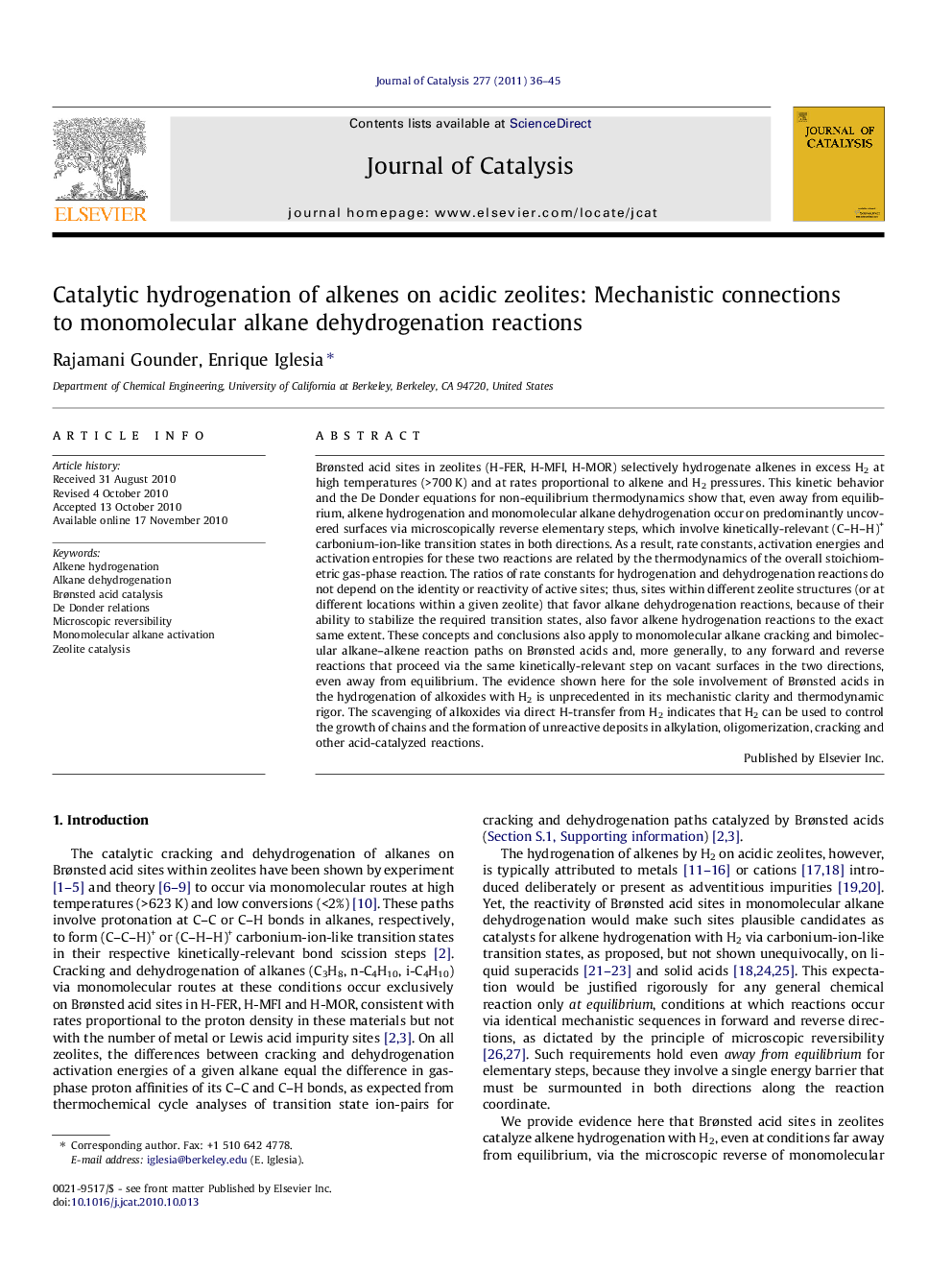| کد مقاله | کد نشریه | سال انتشار | مقاله انگلیسی | نسخه تمام متن |
|---|---|---|---|---|
| 61837 | 47608 | 2011 | 10 صفحه PDF | دانلود رایگان |

Brønsted acid sites in zeolites (H-FER, H-MFI, H-MOR) selectively hydrogenate alkenes in excess H2 at high temperatures (>700 K) and at rates proportional to alkene and H2 pressures. This kinetic behavior and the De Donder equations for non-equilibrium thermodynamics show that, even away from equilibrium, alkene hydrogenation and monomolecular alkane dehydrogenation occur on predominantly uncovered surfaces via microscopically reverse elementary steps, which involve kinetically-relevant (C–H–H)+ carbonium-ion-like transition states in both directions. As a result, rate constants, activation energies and activation entropies for these two reactions are related by the thermodynamics of the overall stoichiometric gas-phase reaction. The ratios of rate constants for hydrogenation and dehydrogenation reactions do not depend on the identity or reactivity of active sites; thus, sites within different zeolite structures (or at different locations within a given zeolite) that favor alkane dehydrogenation reactions, because of their ability to stabilize the required transition states, also favor alkene hydrogenation reactions to the exact same extent. These concepts and conclusions also apply to monomolecular alkane cracking and bimolecular alkane–alkene reaction paths on Brønsted acids and, more generally, to any forward and reverse reactions that proceed via the same kinetically-relevant step on vacant surfaces in the two directions, even away from equilibrium. The evidence shown here for the sole involvement of Brønsted acids in the hydrogenation of alkoxides with H2 is unprecedented in its mechanistic clarity and thermodynamic rigor. The scavenging of alkoxides via direct H-transfer from H2 indicates that H2 can be used to control the growth of chains and the formation of unreactive deposits in alkylation, oligomerization, cracking and other acid-catalyzed reactions.
Alkene Hydrogenation on Acidic Zeolites: Brønsted acid sites in FER, MFI, and MOR zeolites catalyze monomolecular alkane dehydrogenation and its microscopic reverse, alkene hydrogenation with H2, via the same kinetically-relevant (C–H–H)+ carbonium-ion-like transition states, even far from equilibrium. The measured rate constants, activation energies and activation entropies for dehydrogenation and hydrogenation are related by the equilibrium constant and the enthalpy and entropy for the stoichiometric gas-phase reaction, which are independent of the reactivity and structure of the active sites.Figure optionsDownload high-quality image (83 K)Download as PowerPoint slide
Journal: Journal of Catalysis - Volume 277, Issue 1, 3 January 2011, Pages 36–45